NISM Newsletter - January 2022

NISM Newsletter
Issue 7, January 2022
Editorial
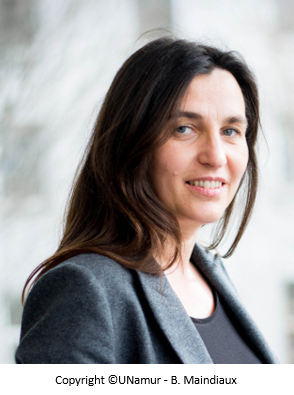 Despite the roller coasters, and the slalom run, we are all struggling to pursue our research, teaching, and learning activities. NISM looks toward the future, and faces two major challenges this year. One objective will be the modification of the governance rules – more in agreement with the institute structure, composition, size and evolution. The second target will be the launch of a call for projects dedicated to non-permanent researchers only, with the aim to increase their visibility, and to give them a new/first lever for autonomy.
Despite the roller coasters, and the slalom run, we are all struggling to pursue our research, teaching, and learning activities. NISM looks toward the future, and faces two major challenges this year. One objective will be the modification of the governance rules – more in agreement with the institute structure, composition, size and evolution. The second target will be the launch of a call for projects dedicated to non-permanent researchers only, with the aim to increase their visibility, and to give them a new/first lever for autonomy.
By then, I hope we will be able to announce soon the day of the on-site NISM Annual Meeting, where young NISM researchers will present their recent research outputs!
Francesca Cecchet
Vice-President of NISM
News
“Natural Photonics and Bioinspiration”: A book by Dr. Sébastien Mouchet and Prof. Olivier Deparis
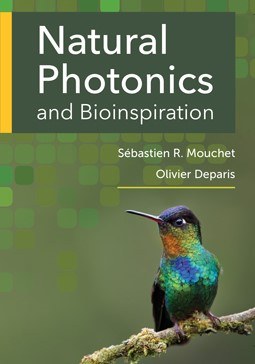 Some natural biological structures such as butterfly wings, beetle elytra or fish scales are responsible of mind-blowing optical effects.
Some natural biological structures such as butterfly wings, beetle elytra or fish scales are responsible of mind-blowing optical effects.
Iridescence, reflection, scattering, polarization, color mixing, or fluorescence, all generated by biological photonic structures are studied and detailed in this book.
It provides design and development of novel photonic devices inspired by those structures.
The book, co-authored by Dr. Sébastien Mouchet and Prof. Olivier Deparis, entitled "Natural Photonics and Bioinspiration", was published in October, by Artech House, with the financial support of the F.R.S.-FNRS and the copy-editing by Dr Victoria L. Welch. The foreword was written by Profs. Serge Berthier and Pete Vukusic.
Optical response of corrugated graphene
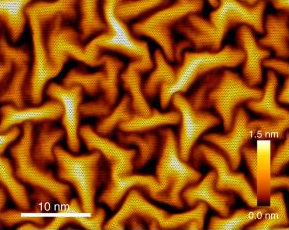
Graphene, with its monolayer of carbon atoms, is one the most famous two-dimensional materials. The study of 2D materials has opened up new fields of research associated with their particular properties, especially in optics.
Experimental methods of synthesis usually aim to make the layers as flat as possible. Conversely, this research suggests to tune the optical responses of graphene by amplifying the corrugations of the material by heat treatment.
This work is a collaboration between the "Center of Energy Research" of Budapest, and NISM members Bruno Majérus (PhD. student) and Prof. Luc Henrard.
These results, published in Nature Nanotechnology, show that surface-exalted molecular spectroscopies, including Raman spectroscopy (SERS), take advantage of the plasmon excitation of corrugated graphene in the visible range.
Source : https://doi.org/10.1038/s41565-021-01007-x
Prof. Yoann Olivier obtained a NARC fellowship
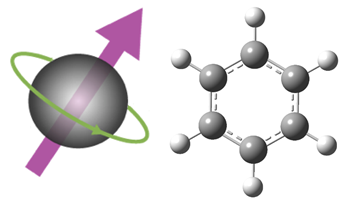 As a distinction for his recent works, Prof. Yoann Olivier was awarded a NARC fellowship (Namur Research College) for the next two academic years. Prof. Olivier’s project “IMAGINE” focusses on multiscale computational approaches for the study of electron spin-dependent processes in pi-conjugated materials. The fundamental understanding of these processes is key in the field of organic electronics to design innovative materials leading for instance to the improvement of OLEDs performance.
As a distinction for his recent works, Prof. Yoann Olivier was awarded a NARC fellowship (Namur Research College) for the next two academic years. Prof. Olivier’s project “IMAGINE” focusses on multiscale computational approaches for the study of electron spin-dependent processes in pi-conjugated materials. The fundamental understanding of these processes is key in the field of organic electronics to design innovative materials leading for instance to the improvement of OLEDs performance.
Prof. Olivier is currently head of HPC-MM pole of NISM. He manages several research projects and PhD theses. He also teaches in both the Chemistry and Physics Bachelor and Master Programs of UNamur.
The NARC “Namur Research College” offers an environment allowing young researchers to devote most of their working time to research, while being preserved from administrative, logistic and other everyday loads, and ensures the visibility of salient researchers inside and outside the UNamur.
The third symposium of membrane protein biophysics was successful
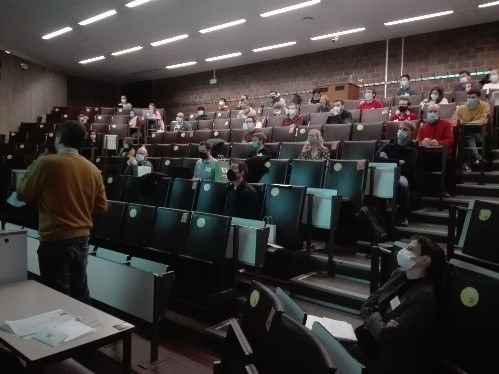 Organized by Profs. Catherine Michaux and Eric Perpète (NISM - Laboratory of Physical Chemistry of Biomolecules) jointly with Prof. André Matagne (ULiège), the 3rd one-day symposium of “Current trends in membrane protein biophysics” was held on December 3rd in UNamur.
Organized by Profs. Catherine Michaux and Eric Perpète (NISM - Laboratory of Physical Chemistry of Biomolecules) jointly with Prof. André Matagne (ULiège), the 3rd one-day symposium of “Current trends in membrane protein biophysics” was held on December 3rd in UNamur.
By scrupulously respecting the sanitary rules, more than 70 participants were able to join the meeting and enjoyed the talks given by 5 international speakers coming from Europe or USA.
It was a great success!
Dual batteries of Prof. SU’s team on RTBF tv
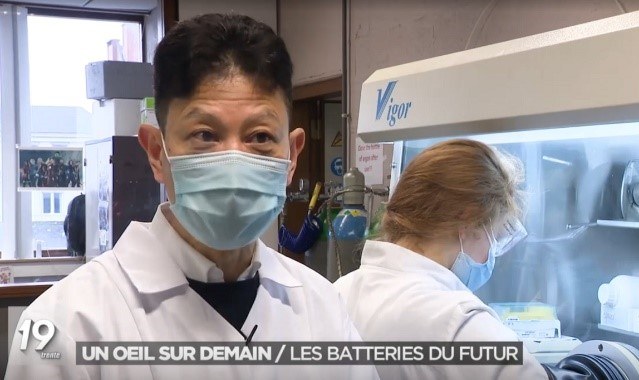 Prof. Bao-Lian Su of NISM was interviewed in RTBF TV news program “Un Oeil sur Demain” about the common project between Prof. Su team and teams of Prof. Jie Shu of Ningbo University (Zhejiang, China) and Prof. Alexandru Vlad of UCLouvain (Belgium) on the development of new batteries based on Sodium ions.
Prof. Bao-Lian Su of NISM was interviewed in RTBF TV news program “Un Oeil sur Demain” about the common project between Prof. Su team and teams of Prof. Jie Shu of Ningbo University (Zhejiang, China) and Prof. Alexandru Vlad of UCLouvain (Belgium) on the development of new batteries based on Sodium ions.
The new prototype of dual batteries uses Sodium, which allow very fast electrode kinetics comparable to conventional surface capacitive systems.
The use of Sodium as in table salt is promising because it is abundant in nature, low cost and nontoxic compared to Lithium for instance.
NISM new contact in ADRE
 The organization of Research Administration (ADRE) of UNamur has recently changed. In addition to projects valorisation, the ADRE scientific advisers are now involved in projects implementation. In order to make the relationships between institutes and ADRE more efficient, each institute has now a privileged contact: Dr. Philippe Degée will be the contact point for NISM. Philippe has a PhD in Chemical Sciences and is the scientific advisor for the Energy and Materials research axis within the ADRE.
The organization of Research Administration (ADRE) of UNamur has recently changed. In addition to projects valorisation, the ADRE scientific advisers are now involved in projects implementation. In order to make the relationships between institutes and ADRE more efficient, each institute has now a privileged contact: Dr. Philippe Degée will be the contact point for NISM. Philippe has a PhD in Chemical Sciences and is the scientific advisor for the Energy and Materials research axis within the ADRE.
More information and updates are published on the ADRE page: https://www.unamur.be/recherche/services-adre/contacts-adre
Awarded projects of the 2021 FNRS call to NISM members
CDR Project entitled “The anaesthesia viewed by spectroscopy” awarded to Francesca Cecchet
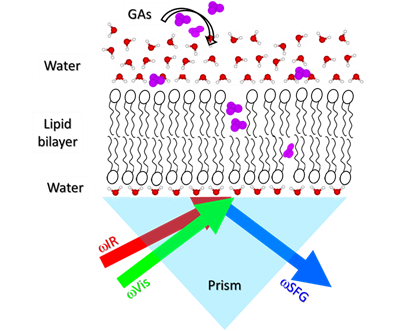 Since 150 years, general anaesthesia (GA) has allowed facilitating surgical procedures and invasive medical analysis. Nowadays, more than 100 general anaesthetic (GAs) drugs are used every day in hospitals. However, despite the large use of anaesthetics, there is still a very poor knowledge of their molecular mode of action, and in particular, numerous speculations and controversies remain about the role of the lipid membrane in the activation of the anaesthetic affect.
Since 150 years, general anaesthesia (GA) has allowed facilitating surgical procedures and invasive medical analysis. Nowadays, more than 100 general anaesthetic (GAs) drugs are used every day in hospitals. However, despite the large use of anaesthetics, there is still a very poor knowledge of their molecular mode of action, and in particular, numerous speculations and controversies remain about the role of the lipid membrane in the activation of the anaesthetic affect.
The aim of this project is to investigate the interactions, and elucidate the mechanism of anaesthetic drugs with model lipid membranes thanks to the intrinsic selectivity of vibrational Sum Frequency Generation spectroscopy (SFG) to interfacial systems, such as the lipid membrane. From the SFG response of lipid bilayers in interaction with anaesthetics, this projects aims at i) unveiling the conformational changes of the lipid membranes induced by GAs, and correlating them with changes in the membrane fluidity and phase transitions; ii) establishing the conformation and orientation of GAs within the lipid bilayer, and that depending on the dosage; and iii) understanding the behaviour of interfacial water and its role in triggering the membrane-GAs interactions. This knowledge may contribute defining the full molecular picture of the action of anaesthesia, and clarify the behaviour of the cell membrane in the activation of the toxicological effect of anaesthetics.
PIN-BILAT-M Bilateral Mobility Project with PAS (The Polish Academy of Sciences) entitled “PHOSPHOR: Investigation of PHOSpholipids-nanophosPHORS interactions by vibrational and thermoluminescence methods” awarded to Francesca Cecchet
ZnGa2O4:Cr3+ (ZGO:Cr) is one of the most promising red persistent phosphors for in-vivo imaging due to its 650–750 nm emission band in the range of the so-called first biological window. The current project will use vibrational spectroscopies (Fourier-transform infrared spectroscopy - FTIR, Raman scattering, as well as sum-frequency generation - SFG) to establish marker bands of the interaction of nanophosphors with synthetic and natural phospholipids in cell membrane models. Additionally, the design and engineering of nanophosphors by replacing host Ga3+ cations with Al3+/In3+ is planned to control structural changes (thermoluminescence data) and their effect on the duration of persistent luminescence.
Mobility exchange project in collaboration with the Division of Optical Spectroscopy of the Institute of Low Temperature and Structural Research, Wroclaw, Poland.
CDR project entitled “NMR Characterisation of Complex Phases in Solid-State (COMPASS)”, awarded to Luca Fusaro
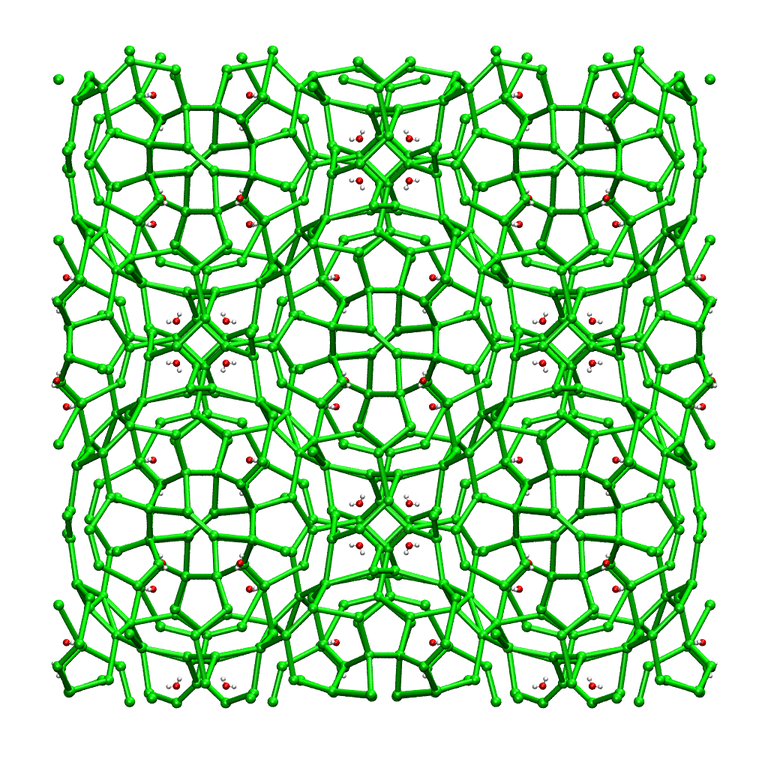 The research project is intended to extend the knowledge acquired during the team previous research activity, which was recently published in Nature.1
The research project is intended to extend the knowledge acquired during the team previous research activity, which was recently published in Nature.1
In the study, four different crystalline phases of a simple hydrochloride salt of Fampridine (4-APH+Cl-) were isolated. Two of them showed remarkable complexity, belonging to the special class of Frank-Kasper phases.
The results also proved that the crystallisation of these complex phases was promoted by a specific pre-organization of spherical aggregates in liquid-state. These results open interesting questions, such as whether it is possible to further extend this family of complex solid-state phases by tuning the content of water, or replacing the cation/anion with other small molecules.
The goal is to answer these questions and, at the same time, determine an analytical protocol to quickly characterise these complex phases. The team proposes the application of solid-state Nuclear Magnetic Resonance of a large variety of nuclei for the characterization of these complex crystalline materials.
Magic Angle Spinning (MAS) NMR experiments of powder samples by 1H, 13C, and 15N will be carried out to characterise the cation. The role of water and chloride will be studied by NMR experiments of quadrupolar nuclei, such as 2H, 17O, and 35Cl. Dynamics of molecules will be studied by variable temperature experiments. Eventually, different commercial cations and anions will be studied, to understand if other systems show crystalline structures of similar complexity.
The results of NMR measurements will be combined with single-crystal and powder x-ray diffraction methods and various thermal analyses as hot-stage microscopy, thermo-gravimetric analysis and differential scanning Calorimetry.
Montis, R., Fusaro, L., Tumanov. N. et al. Nature 590, 275–278 (2021). DOI: 10.1038/s41586-021-03194-y
NISM PhDs and post-docs
Presentation card: Yathreb Naghmouchi
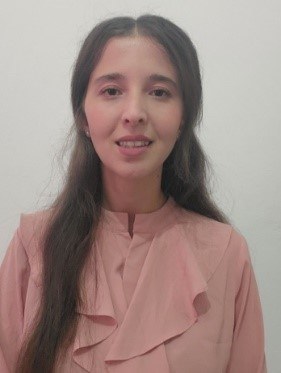 |
My name is Yathreb NAGHMOUCHI, I am a PhD student at the Laboratory of Theoretical Chemistry (LCT) under the supervision of Prof. Benoit CHAMPAGNE. I am preparing my thesis project in the University of Namur and the University of Carthage in Tunisia. My thesis is entitled “Preparation, physico-chemical characterizations, and quantum chemical investigations of new materials based on Chloranilate”. Its aim is to combine theory with experiment in order to provide a deeper insight into their properties and their structural features as well as to reveal structure-property relationships. |
Presentation card: Lucie Pedussaut
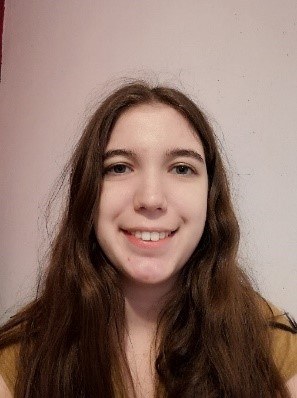 |
My name is Lucie Pedussaut, I am a PhD student working in the group of Prof. Guillaume Berionni since 2021 with an ARC grant. I work on mapping the reactivity of borylated endo and exo-glycals. |
Presentation card: Nicolas Niessen
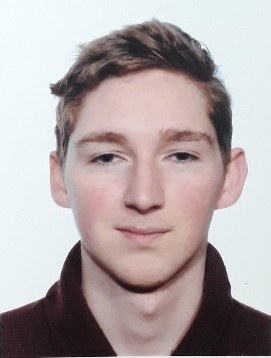 |
My name is Nicolas Niessen, I am a PhD student and I will be working in NISM with Prof. Guillaume Berionni. I started my PhD on September 2021 and I am working on the design and synthesis of non-planar boron super Lewis acids. |
Latest publications in NISM
- "Self-aggregation of stilbazolium ion pairs in liquid chloroform. A molecular dynamics study", Ramos, T. N., Hollóczki, O., Kirchner, B. & Champagne, B., 15 Dec 2021, In: Journal of Molecular Liquids. 344, 10 p., 117735. https://doi.org/10.1016/j.molliq.2021.117735
- "Single-molecule magnets as novel fillers with superior dispersibility – First application of a tetranuclear iron(III) molecular magnet [Fe4(acac)6(Br-mp)2] for pervaporative dehydration of ethanol", Jakubski, Ł., Grzybek, P., Chrobak, A., Haye, E., Colomer, J. F., Konieczny, K., Turczyn, R. & Dudek, G., 15 Dec 2021, In: Separation and purification Technology. 277, 119038. https://doi.org/10.1016/j.seppur.2021.119038
- "Substitution Effects on a New Pyridylbenzimidazole Acceptor for Thermally Activated Delayed Fluorescence and Their Use in Organic Light-Emitting Diodes", Hall, D., Rajamalli, P., Duda, E., Suresh, S. M., Rodella, F., Bagnich, S., Carpenter-Warren, C. L., Cordes, D. B., Slawin, A. M. Z., Strohriegl, P., Beljonne, D., Köhler, A., Olivier, Y. & Zysman-Colman, E., 18 Oct 2021, In: Advanced Optical Materials. 9, 20, 2100846. https://doi.org/10.26434/chemrxiv.14481375.v1
Upcoming events
Women and Girls in Science @ UNamur Postponed
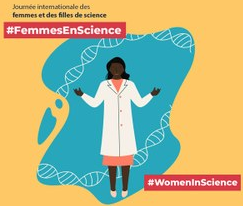 UNamur is organizing the 2nd edition of the Women and Girls in Science day, in the framework of the 2015 declaration by the United Nations General Assembly.
UNamur is organizing the 2nd edition of the Women and Girls in Science day, in the framework of the 2015 declaration by the United Nations General Assembly.
The day aims at promoting the access of women and girls to science and technology as well as their full and fair participation. It takes place on 11th of February 2022. Due to the sanitary situation, we will hold an online meeting on 11th of February afternoon (2:00 to 3.30 pm). Professor Petra Rudolf from the University of Groningen and Past-President of the European Physical Society (EPS) as well as Prof. Antonella Fioravanti from VUB will be the keynote speakers.
A one-day in-person meeting will be held later in Spring 2022. Contributions are welcomed as posters by Master students and early stage researchers from STEM and Natural Sciences of any gender. Further details will follow.
For more information: https://wgis.unamur.be/ and women-in-science@unamur.be
Contact in NISM: Lorena Ballesteros Ferraz (UR-LLS) and Sébastien MOUCHET (UR-LPS).
Copyright © 2022 Namur Institute of Structured Matter, all rights reserved.
Our mailing address is:
executive-assistant.nism@unamur.be
Subscribe to NISM newsletter here.

